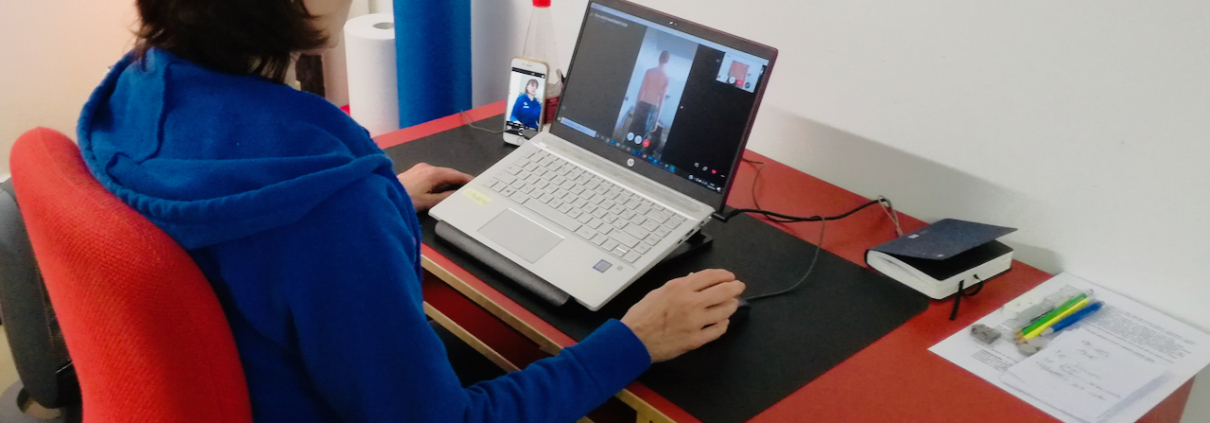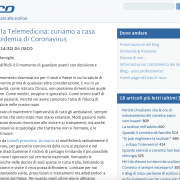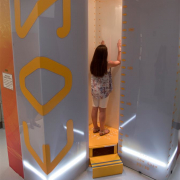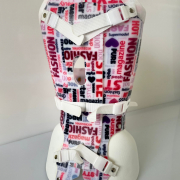Telemedicine in response to Covid-19 emergency: the first results
“I have appreciated being able to have continuity of treatment and the certainty that I can go on being supported by my doctor and therapist even in an emergency, like the one created by the coronavirus outbreak”. This is one of many anonymous comments collected by ISICO through quality assessment questionnaires that patients are filling in, voluntarily, to give us their personal feedback on our telemedicine service.
The first results show a very high level of satisfaction among patients (mean overall satisfaction rating 2.8/3). Dozens of them clearly feel reassured by the fact that the telemedicine modality guarantees them continuity of care. As well as considering the modality worth recommending to others (mean satisfaction rating 2.8/3), they also feel that the information they have received is clear and exhaustive (mean satisfaction rating 2.99/3).
As you know, on March 16th, after 13 days of constant and increasing cancellations due to travel restrictions (50% of bookings), ISICO launched its telemedicine initiative.
It was clear to us, here at ISICO, that we needed to find a way of guaranteeing our patients ongoing care while at the same time removing the need for them to travel and physically access health facilities, thereby protecting them from possible contact with the virus.
Over the 12 days since the introduction of this new system, we have provided more than 1000 medical consultations or physiotherapy sessions in telemedicine mode, and cut face-to-face interventions to just 0.5% of the total.
“This is a viable solution allowing us to continue providing services to patients, while eliminating the risk of infection associated with the need (both for patients and healthcare providers) to travel and access health facilities” explains Prof. Stefano Negrini, medical and scientific director of Isico.
Organizing the service
The ISICO staff worked together, in teleconferences, to identify the tools necessary to conduct examinations remotely, i.e. via Skype or WhatsApp video call. The sensitive data are not recorded on these channels, but only in the internally used and protected file storage.
To be able to conduct examinations in telemedicine mode, we requested the collaboration of parents, sending them tutorials on how to photograph their children in a way that would allow us to do the measurements necessary to evaluate the state of their scoliosis.
We also had to explain to parents how the patient should be positioned in relation to the video camera. “Of course, measurements obtained in this way are slightly less reliable than those taken directly, but the photos/videos we are sent before the actual examination are generally of good quality” Prof. Negrini adds.
Parental support is also essential for delivering rehabilitation in telemedicine mode. “Fortunately, parents are always there in the gym, and so they are familiar with the work we do with their children” says Michele Romano, director of physiotherapy at ISICO. “We therapists have also sent written instructions and tutorials to explain how to perform simple tests of musculoskeletal function, and how to make their own simple measurement tools, which then help us to obtain reliable data. We are able to do, remotely, 70% of what we would normally do at the center”.
Consultations include adapted measurements and evaluations, which are done both “live” and from the photos/videos received. During physiotherapy sessions, new sets of exercises are defined and recorded. In both these settings, interviews and counselling are performed as usual.
It is worth recalling that treatments provided by ISICO are mostly based on home practice. Patients exercise at home 10/20 minutes per day, and individual physiotherapy sessions are provided every 30-90 (deformities) or 7-15 (pain) days.
During the sessions, physiotherapists perform evaluations, update and teach exercises (video recorded by parents), and provide patients with cognitive-behavioural therapy and counselling. An App, synchronised with the individual patient’s file, is used to manage treatment plans, provide exercise programmes and videos, promote compliance (with motivational tools) and encourage contact between patients and physiotherapists.
In conclusion, our early results are extremely positive. The telemedicine approach, which has been well received both by the patients and the professionals involved, has given us a means of providing uninterrupted outpatient services. In the current pandemic, this approach, reducing the need for travel and face-to-face contacts, can offer a viable alternative to closure for many outpatient services.












Leave a Reply
Want to join the discussion?Feel free to contribute!